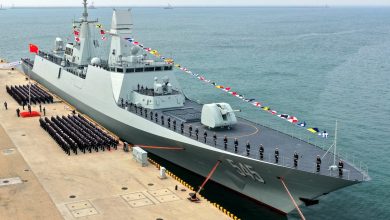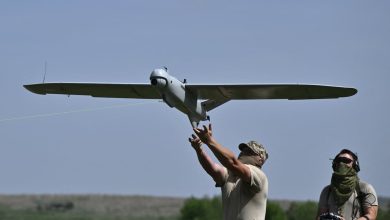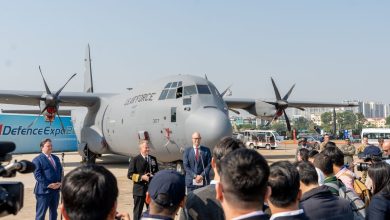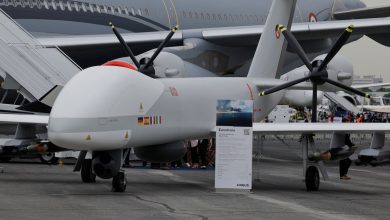Fighters and bombers are what America needs to win — not quadcopters
On Saturday, Israeli F-35 stealth fighter aircraft penetrated highly defended Iranian airspace, struck a broad number of military targets and returned home safe. Days earlier, U.S. B-2 stealth bombers struck multiple deeply buried Houthi arms caches. These missions illustrate a key point: Despite trendy arguments to the contrary, the United States still requires the most advanced fighters and bombers in our arsenal if we want to win in future conflicts.
Questioning the value of modern combat aircraft is not new within the Washington defense arena. Some observers of Russia-Ukraine fighting in trenches extrapolate that small drones are changing the nature of air warfare. However, these assertions ignore the fact that the drones’ impact is largely isolated to tactical Army ground operations, not on air warfare. Infantry and armor cannot move without being targeted by drones. Ukrainian fighter aircraft moving at 500 miles an hour are not affected.
While it is appropriate to recognize the impact of small drones in the battlespace, it is also crucial to be clear-eyed about the scale and scope of that potential. Quadcopters did nothing to prevent the Russia-Ukraine war from descending into a withering slog. Conditions for that type of fight were set when neither side secured air superiority. The U.S. must bear this in mind with extreme care as it prepares for a potential fight against China.
Deterring adversaries requires a successful plan and the requisite means to defeat them. This starts with the ability to control the air in times and places necessary to execute conventional strategic attack of key enemy centers of gravity, such as war material production, logistics, command leadership, control centers, communications, power generation and supply depots. An opponent cannot sustain a fight if their means to execute it are paralyzed or negated. This is why the stealthy penetrating B-21 bomber is so important.
Fighters like the F-35 and F-22 secure air superiority over enemy territory and U.S. forces while adding to strike capacity. The Next Generation Air Dominance (NGAD) advanced stealth fighter working in conjunction with uninhabited Collaborative Combat Aircraft (CCA) will take these mission capabilities to new heights.
Anyone questioning the importance of these critical airpower missions should review recent headlines. Consider the recent B-2 strike in Yemen. After months of intercepting Houthi missiles targeting international shipping in a reactionary, whack-a-mole fashion, the Biden administration finally sought to eliminate a source of these attacks by striking arms caches buried in hardened underground facilities. B-2s have the unique ability to carry weapons large enough to destroy these protective measures while also harnessing their stealth to avoid enemy threats. A swarm of quadcopters would be useless in this attack. Range, payload and survivability matter.
Similarly, Israel turned to the F-35 in its recent strikes against Iran because this aircraft possesses the ability to penetrate robust air defenses, deliver powerful precision strikes and get home safe. Nor is this the only recent use of the F-35. Israel, along with the U.S., used the F-35, plus other fighter aircraft, to intercept over 100 Iranian missiles launched in April. The results were impressive and heralded a historic air-and-missile defense accomplishment. Of note, no quadcopters carrying hand grenades were used in either Iran’s attack or the coalition’s defense of Israel.
Bottom line: Modern fighters and bombers provide essential security options. Design attributes tied to range, payload, flight performance, survivability and lethality found in the F-22, F-35, B-2, B-21 and NGAD penetrating counter-air fighter are make-or-break. While some may criticize the cost of these aircraft, they evidence much more value than less costly aircraft without stealth. Back in Desert Storm, one stealth aircraft exhibited the capability to deliver the same effects that it took 19 less costly but nonstealthy aircraft. Today, modern stealth multiplies that figure. Analysts should focus on cost-per-effect, not unit aircraft cost. The question that really matters is the cost of not having enough modern fighters and bombers.
The price of not possessing these capabilities is on display every day in Ukraine. Despite having millions of drones and thousands of missiles, Ukraine is stuck in a World War I-style trench warfare fight with Russia. They lack the means to wage sufficient deep strikes that would put Russia on the defensive. They also lack modern air superiority fighters necessary to secure its skies from attack. Quadcopters with grenades targeting individual tanks or military personnel may be tactically useful in trench warfare, but they are of little relevance at the operational or strategic level.
Overreliance upon such technologies invites catastrophic risk when facing a larger opponent who can win simply by not quitting. The U.S. should bear this in mind with extreme care as it prepares for a potential fight against China.
Serious threats demand serious solutions. The U.S. is facing a greater set of threats than it has ever faced before. Small drones, Collaborative Combat Aircraft and next-generation missiles will have a role in the equation, but we must not confuse them as the critical components of airpower that are essential to win in war. Recent world events prove this in stark terms.
The last three decades have seen a decline in the combat inventory of the U.S. Air Force by over half. As a priority, America must now rebuild its arsenal of fighters and bombers. Neglecting this imperative will put credible deterrence and its necessary prerequisite — our ability to win — at risk.
USAF Gen. T. Michael Moseley (ret.) served as the 18th Chief of Staff of the U.S. Air Force.
Read the full article here






